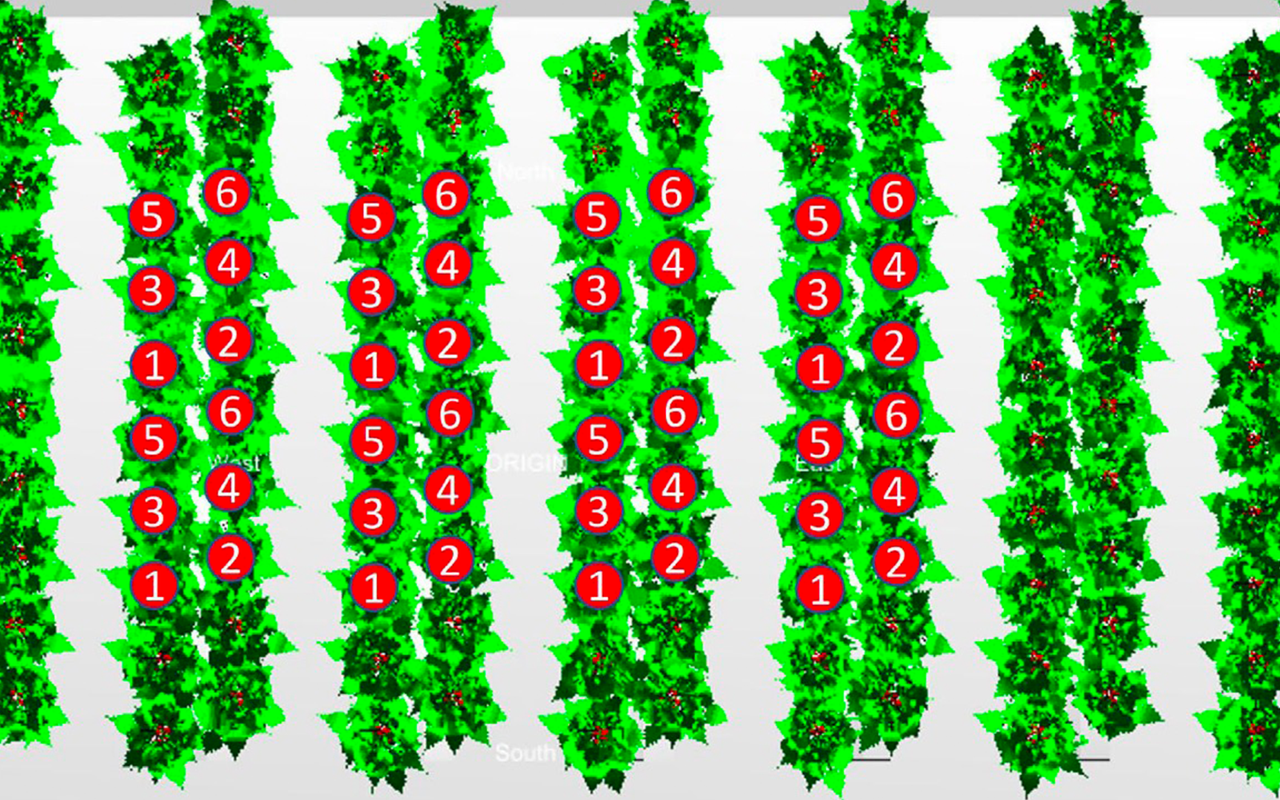Enhancing Crop Growth with Intra-Canopy LED Lighting: A New Approach to Greenhouse Cultivation
This study explores the use of intra-canopy LED lighting to enhance crop growth and yield in greenhouse cultivation. The research validates a functional structural plant model (FSPM) to estimate light absorption at leaf level. The findings reveal that combined intra-canopy and top lighting yield the most uniform light absorption. The study also indicates that intra-canopy lighting results in 8% higher total light absorption than top lighting, and combining 50% intra-canopy lighting with 50% top lighting increases light absorption by 4%. The research suggests that both total light absorption and light distribution should be considered when positioning LED lamps to illuminate a canopy.
The research paper titled "Consequences of intra-canopy and top LED lighting for uniformity of light distribution in a tomato crop" explores the potential of intra-canopy LED lighting to enhance crop growth and yield in greenhouse cultivation. The study validates a functional structural plant model (FSPM), which combines plant morphology with a ray tracing model to estimate light absorption at leaf level.
The key findings of the study are as follows:
-
The study found that the variation coefficient within the horizontal direction was higher for intra-canopy lighting than top lighting (CV=48% versus CV= 43%), while the combination of intra-canopy lighting and top lighting yielded the lowest CV (37%).
-
Combined intra-canopy and top lighting (50/50%) had in all directions a more uniform light absorption than intra-canopy or top lighting alone. The variation was minimal when the ratio of PPFD from intra-canopy to top lighting was about 1, and increased when this ratio increased or decreased.
-
Intra-canopy lighting resulted in 8% higher total light absorption than top lighting, while combining 50% intra-canopy lighting with 50% top lighting, increased light absorption by 4%.
-
Variation in light distribution was further reduced when the intra-canopy LEDs were distributed over strings at four instead of two heights.
The study concludes that when positioning LED lamps to illuminate a canopy, both total light absorption and light distribution have to be considered. This research provides valuable insights for improving lighting design in greenhouse cultivation, potentially leading to enhanced crop growth and yield.
- Title: "Consequences of intra-canopy and top LED lighting for uniformity of light distribution in a tomato crop"
- Authors: R. Schipper, M. van der Meer, P.H.B. de Visser, E. Heuvelink, L.F.M. Marcelis
- Affiliation: Horticulture and Product Physiology, Wageningen University, Wageningen, Netherlands, Business Unit Greenhouse Horticulture, Wageningen Research, Wageningen, Netherlands
- Published: 19 January 2023
- DOI: 10.3389/fpls.2023.1012529
- Specialty Section: This article was submitted to Plant Biophysics and Modeling, a section of the journal Frontiers in Plant Science
- Keywords: functional structural plant model (FSPM), light emitting diode (LED), tomato, interlighting, ray tracing
© 2023 Luger Research e.U. – Institute for Innovation & Technology

